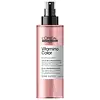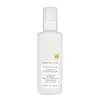What's inside
What's inside
 Key Ingredients
Key Ingredients

No key ingredients
 Benefits
Benefits

 Concerns
Concerns

 Ingredients Side-by-side
Ingredients Side-by-side

Water
Skin ConditioningCocos Nucifera Oil
MaskingAmodimethicone
Polyquaternium-37
Phenoxyethanol
PreservativePropylene Glycol Dicaprylate/Dicaprate
EmollientTocopherol
AntioxidantSodium Hydroxide
BufferingDimethicone PEG-7 Phosphate
CleansingPPG-1 Trideceth-6
Skin ConditioningTrideceth-6
EmulsifyingBehentrimonium Chloride
PreservativeXylose
HumectantLactic Acid
BufferingEthylhexylglycerin
Skin ConditioningLinalool
PerfumingSorbitan Oleate
EmulsifyingIsopropyl Alcohol
SolventCetrimonium Chloride
AntimicrobialHydrolyzed Vegetable Protein Pg-Propyl Silanetriol
Skin ConditioningResveratrol
AntioxidantBenzyl Alcohol
PerfumingLimonene
PerfumingCoumarin
PerfumingPotassium Sorbate
PreservativeParfum
MaskingWater, Cocos Nucifera Oil, Amodimethicone, Polyquaternium-37, Phenoxyethanol, Propylene Glycol Dicaprylate/Dicaprate, Tocopherol, Sodium Hydroxide, Dimethicone PEG-7 Phosphate, PPG-1 Trideceth-6, Trideceth-6, Behentrimonium Chloride, Xylose, Lactic Acid, Ethylhexylglycerin, Linalool, Sorbitan Oleate, Isopropyl Alcohol, Cetrimonium Chloride, Hydrolyzed Vegetable Protein Pg-Propyl Silanetriol, Resveratrol, Benzyl Alcohol, Limonene, Coumarin, Potassium Sorbate, Parfum
Water
Skin ConditioningC11-15 Pareth-12
EmulsifyingParfum
MaskingAlgin
MaskingChitosan
Carrageenan
Coco-Glucoside
CleansingHydrolyzed Keratin
HumectantPanthenol
Skin ConditioningSalvia Hispanica Seed Oil
MoisturisingSargassum Filipendula Extract
Skin ProtectingHypnea Musciformis Extract
Skin ProtectingGelidiella Acerosa Extract
Skin ProtectingLitchi Chinensis Pericarp Extract
Skin ConditioningCetearamidoethyldiethonium Succinoyl Hydrolyzed Pea Protein
CleansingBehentrimonium Methosulfate
Cetrimonium Chloride
AntimicrobialAmodimethicone
Caprylic/Capric Triglyceride
MaskingCetearyl Alcohol
EmollientTrideceth-12
EmulsifyingQuaternium-80
Glycerin
HumectantSorbitol
HumectantXanthan Gum
EmulsifyingCitric Acid
BufferingPropylene Glycol
HumectantPotassium Sorbate
PreservativePhenoxyethanol
PreservativeWater, C11-15 Pareth-12, Parfum, Algin, Chitosan, Carrageenan, Coco-Glucoside, Hydrolyzed Keratin, Panthenol, Salvia Hispanica Seed Oil, Sargassum Filipendula Extract, Hypnea Musciformis Extract, Gelidiella Acerosa Extract, Litchi Chinensis Pericarp Extract, Cetearamidoethyldiethonium Succinoyl Hydrolyzed Pea Protein, Behentrimonium Methosulfate, Cetrimonium Chloride, Amodimethicone, Caprylic/Capric Triglyceride, Cetearyl Alcohol, Trideceth-12, Quaternium-80, Glycerin, Sorbitol, Xanthan Gum, Citric Acid, Propylene Glycol, Potassium Sorbate, Phenoxyethanol
 Reviews
Reviews

Ingredients Explained
These ingredients are found in both products.
Ingredients higher up in an ingredient list are typically present in a larger amount.
This water-soluble silicone is used for its hydrating and softening properties. It is used to add a silky feel to skincare products and has great benefits for haircare.
In haircare, this ingredient:
- Adds shine
- Protects color
- Offers thermal protection
- Boosts hair strength
- Does not build up as easily
This ingredient is a preservative, antimicrobial, and emulsifier. It is often used in cosmetics for its ability to cleanse, condition, and reduce static.
Cetrimonium chloride is a quaternary ammonium salt, meaning it has a water-soluble structure.
Parfum is a catch-all term for an ingredient or more that is used to give a scent to products.
Also called "fragrance", this ingredient can be a blend of hundreds of chemicals or plant oils. This means every product with "fragrance" or "parfum" in the ingredients list is a different mixture.
For instance, Habanolide is a proprietary trade name for a specific aroma chemical. When used as a fragrance ingredient in cosmetics, most aroma chemicals fall under the broad labeling category of “FRAGRANCE” or “PARFUM” according to EU and US regulations.
The term 'parfum' or 'fragrance' is not regulated in many countries. In many cases, it is up to the brand to define this term.
For instance, many brands choose to label themselves as "fragrance-free" because they are not using synthetic fragrances. However, their products may still contain ingredients such as essential oils that are considered a fragrance by INCI standards.
One example is Calendula flower extract. Calendula is an essential oil that still imparts a scent or 'fragrance'.
Depending on the blend, the ingredients in the mixture can cause allergies and sensitivities on the skin. Some ingredients that are known EU allergens include linalool and citronellol.
Parfum can also be used to mask or cover an unpleasant scent.
The bottom line is: not all fragrances/parfum/ingredients are created equally. If you are worried about fragrances, we recommend taking a closer look at an ingredient. And of course, we always recommend speaking with a professional.
Learn more about ParfumPhenoxyethanol is a preservative that has germicide, antimicrobial, and aromatic properties. Studies show that phenoxyethanol can prevent microbial growth. By itself, it has a scent that is similar to that of a rose.
It's often used in formulations along with Caprylyl Glycol to preserve the shelf life of products.
Potassium Sorbate is a preservative used to prevent yeast and mold in products. It is commonly found in both cosmetic and food products.
This ingredient comes from potassium salt derived from sorbic acid. Sorbic acid is a natural antibiotic and effective against fungus.
Both potassium sorbate and sorbic acid can be found in baked goods, cheeses, dried meats, dried fruit, ice cream, pickles, wine, yogurt, and more.
You'll often find this ingredient used with other preservatives.
Learn more about Potassium SorbateWater. It's the most common cosmetic ingredient of all. You'll usually see it at the top of ingredient lists, meaning that it makes up the largest part of the product.
So why is it so popular? Water most often acts as a solvent - this means that it helps dissolve other ingredients into the formulation.
You'll also recognize water as that liquid we all need to stay alive. If you see this, drink a glass of water. Stay hydrated!
Learn more about Water